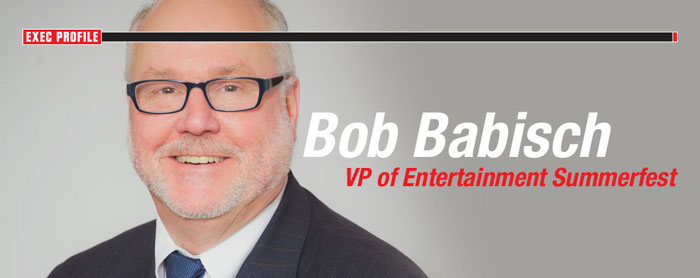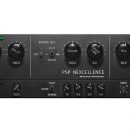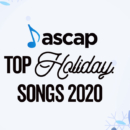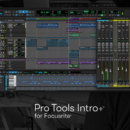
BACKGROUND
Boasting between 800,000 and 1 million visitors a year, Summerfest is the biggest annual festival in the world, with 11 straight days of music. Started in 1968, Bob Babisch joined 10 years later and has been deciding which artists play the Milwaukee-based shindig ever since. This year, they’re incorporating live video streaming and offering The Rolling Stones as their kickoff headliner.
Clients: Bruno Mars, Lady Gaga, Pearl Jam, Zac Brown Band, Kenny Chesney, No Doubt, Kanye West, Tom Petty, Tina Turner, Jimmy Buffet, Dave Matthews.
Falling Into Music
I was in college in 1971, ’72, and got a part-time job at a record store called 1812 Overture. I’d been at the store for two days and the guy who was the runner for their promoting company, his car broke down. They said, “Would you like to be the runner tonight?” I jumped at the chance. It was with Sha Na Na. I did all the backstage stuff and started working part-time on the concert side.
Eventually, I moved to a company in Milwaukee called the Edgewood Agency that did classical music, ballet companies and more. And then the people who were running Summerfest, this must have been ’77, were leaving to start ChicagoFest. They said, “We don’t have anybody to do the music at Summerfest.” I’ve been here since. It was luck.
Well Grounded
Summerfest has been around for 48 years. It’s on an ex-missile site in downtown Milwaukee, on Lake Michigan. 80 acres and 11 stages. We can put over 100,000 people on the grounds and it’s comfortable. We’ve got 23,000 seats at the Marcus Amphitheater on one end, and next to that we have the brand new BMO Harris Pavilion, with 5,000 seats under cover and some room above that. It goes all the way down to a smaller facility for up to 1,000 people. We keep rebuilding and remodeling
Something For Everyone
One of the charms of our festival is we are multi-genre. There’s always something you’re going to like. There are probably seven or eight different formats going every single night. The amphitheater is a hard ticket show, which means you have to buy a separate ticket, but that includes anything on the grounds and all the grounds’ stages have national acts every night.
For the People
It costs $19 a ticket, so it’s a bargain. We survive on sponsorships and ancillaries. We’re a 501(c)3 not-for-profit event—the people’s festival. People in Milwaukee talk about their Summerfest. We try to keep it that way, because we want everybody to come. There are half-price tickets during the day and ways to get in free—Stop Hunger Day or Children’s Day. You can get in here free if you try hard enough.
Setting the Stage
We start the process every year in July. We put a grid up on the wall. There are three of us in booking, looking at the 60 or 70 bands we’d like to have. Then we put offers out to agents—basically fishing. Gradually, that’s sifted down—they’re going to Europe or playing a festival like Lollapalooza. We understand those situations.
We get as many of those bands as we can. You don’t want to have the same format every night, so you move things around. At the same time, you’re putting shows into the amphitheater. That process starts the year before. During last year’s Summerfest, we already had three acts on hold for this year. Once we get the acts we want, we find out who the agents are routing and try to get those acts. When you do as many days as we do, you have to take up all the inventory available. If it gets tight after that, we start the begging process.
We have a deal with Reverbnation where [artists] submit music to us. If they don’t want to do that, they can send to our office. We’re always looking for new stuff. That’s the excitement: to find somebody new and help them with their career.
Competition
You’ve got a window of 11 days. That’s a ton of music, and finding enough bands to fill the slots is tougher every year. There are so many events going on right now in the Midwest. You’ve only got four months of decent weather and you have to pack a lot of living in that time period. There are festivals during our time, so we have competition for acts we want.
Right before our festival, bands going to Europe head over there, because Glastonbury starts during our time. Then there’s a run of European festivals that last for months. So if you’re going to Europe, we’re going to lose you.
Diversity as Niche
There seems to be an overabundance of festivals in America, but there aren’t many festivals like us that hit all genres. There are country festivals, indie, EDM and even oldies. But there’s not one like us that, on any given day, combines all genres at the same time. If somebody’s looking at doing an event, I suggest they do it our way, because there are people who want to see different styles.
Logistics
We use our own sound and lights, and our stage manager gets people moving. Each stage is running five bands a day, including a national headliner in the evening. It gets crazy to make it all work, but we manage to pull it off. Take opening day. Florida Georgia Line in the amphitheater, Sheryl Crow headlining one stage, Trombone Shorty headlining another, Kaskade another, Mavis Staples another, Bastille another, Magic! another, Dirty Heads another. That’s just nighttime headliners and doesn’t count bands we’ve billed starting at noon. Logistically, it’s crazy. You get it up, get it done, tear it out and do it again the next day, for 11 days.
Bands understand the situation we’re in. We’ve got amps, a drum kit on every stage to make life easier for everybody. As far as video screens, that gets tougher for us, except the amphitheater. That’s a separate animal, because that’s a hard ticket show. Whatever the band brings in, we’ll put up.
Video Helps the Radio Star
More people are expecting video, especially in big spaces. They want a better view of their shows, so we’re providing that on the grounds. We have video on almost all the stages.
Money Matters
The money that comes into the festival goes into remodeling the grounds and putting it away in case of rainy days so we can continue the next year. We pay the city rent. Then we act as the landlord for ethnic festivals that come in the rest of the summer. These ethnic organizations do their own, self-sufficient events for their communities with the money they make.
Teaching
We give money to music-dominated school groups, and we also do a band camp every year. We invite high school jazz ensembles for a free day, usually in September. The only thing the school has to provide is the buses. They learn about their instrument and craft and there’s a jam session in the afternoon. The kids love it; they get to be on these stages and play.
The Best Part
When you’re on the side of a stage, the lights go down and people scream. Knowing you helped bring that moment to the audience, that’s the gratification. That’s why we do it. It’s second only to being the person on stage playing.
Vibe
Everybody tells us that, when they play here, the audiences are crazy. It’s the most fun. That’s the difference between somebody paying $100 and saying, “Show me what you’ve got,” to the artist or somebody paying less and saying, “I’m going to have the time of my life tonight.”
Bob Babisch
VP of Entertainment, Summerfest
Years with Company: 38
Web: summerfest.com
By Andy Kaufmann








